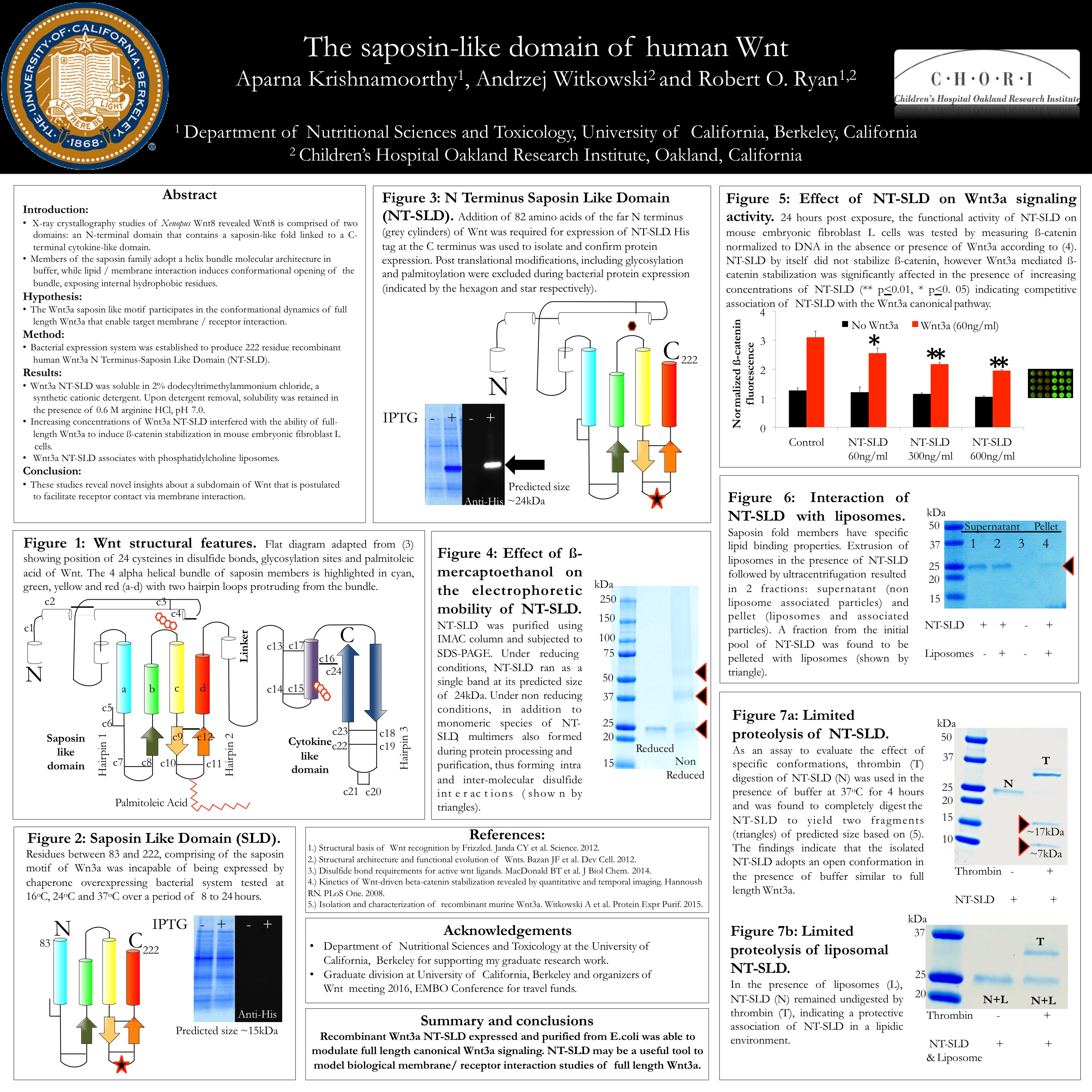Evolutionary links at the heart of the ancient Wnt structure
By the end of my research study on Wnts, I had learnt the name of the game was “troubleshooting and perseverance”. The Wnts are challenging proteins to express and purify due to their basic structure, amino acid composition and post translational modifications. However, my consistent nano-progress landed me an opportunity to share my research findings at the European Molecular Biology Organization’s Wnt meeting in Brno, Czech Republic in 2016 where many Wnt experts had gathered and gave me helpful insights based on their experience. I had successfully expressed, isolated and purified a subdomain of Wnt3a. My results indicated that neighboring structural elements within full-length Wnt3a affect the conformational stability of the subdomain. My findings provides the first insights into the evolutionary origins and functional relevance of the motifs of the Wnt protein.
Related publication:
Abstract
Introduction: X-ray crystallography studies of Xenopus Wnt8 revealed Wnt8 is comprised of two domains: an N-terminal domain that contains a saposin-like fold linked to a C-terminal cytokine-like domain. Members of the saposin family adopt a helix bundle molecular architecture in buffer, while lipid / membrane interaction induces conformational opening of the bundle, exposing internal hydrophobic residues.
Hypothesis: The Wnt3a saposin like motif participates in the conformational dynamics of full length Wnt3a that enable target membrane / receptor interaction.
Method: Bacterial expression system was established to produce 222 residue recombinant human Wnt3a N Terminus-Saposin Like Domain (NT-SLD).
Results: Wnt3a NT-SLD was soluble in 2% dodecyltrimethylammonium chloride, a synthetic cationic detergent. Upon detergent removal, solubility was retained in the presence of 0.6 M arginine HCl, pH 7.0. Increasing concentrations of Wnt3a NT-SLD interfered with the ability of full length Wnt3a to induce ß-catenin stabilization in mouse embryonic fibroblast L cells. Wnt3a NT-SLD associates with phosphatidylcholine liposomes.
Conclusion: These studies reveal novel insights about a subdomain of Wnt that is postulated to facilitate receptor contact via membrane interaction.
